What I’ve Been Playing (Q3) 2023
Thoughts & impressions on the games I played/finished during Q3 of 2023.
 UnexpectedGames
UnexpectedGames
Just a friendly bear who works in financial reporting that would rather be playing, writing or talking about video games. https://twitch.tv/unexpectedenemy
Thoughts & impressions on the games I played/finished during Q3 of 2023.

2023 has been one of the best and worst years in gaming. Some of the greatest games of all time have arguably released this year, including titles I never thought would see the light of day in North America a decade ago (The Legend of Nayuta: Boundless Trails, anyone?). Even if you only play games during your leisure time, you still can’t play everything. Behind all of these amazing games are the creators and designers that made them, however. 6,000+ people lost their jobs across the industry this year, so it’s hard to “feel good” about gaming right now. With that said, you can read about the games I finished during Q1 and Q2 of 2023 here and here, respectively. At the time of writing this, I have now completed 46/52 games for the year, so without further ado, here are the games I managed to finish during the third quarter (Q3) of 2023.

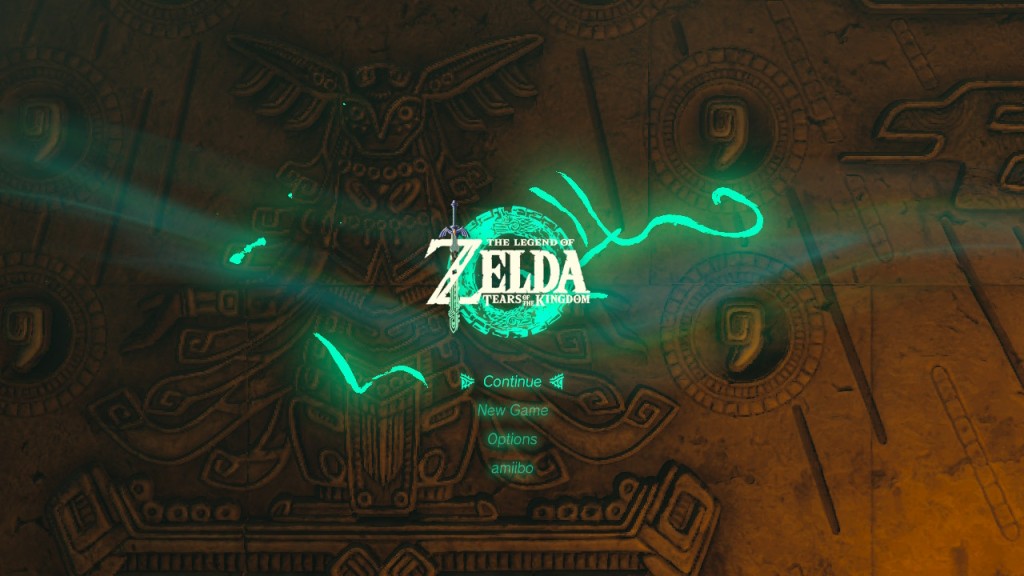
The Legend of Zelda: Tears of the Kingdom (TotK), developed by Nintendo, is a masterclass in game design, iteration and ingenuity. It’s not often Nintendo takes an existing world and makes a direct sequel to it. TotK feels more akin to the likes of what Ryu Ga Gotoku Studio does with Kamurocho from the Yakuza games or even how Insomniac approached reinventing New York City (NYC) in Marvel’s Spider-Man 2. I don’t think Breath of the Wild (BotW) is my favorite Zelda game, but it was an evolution to the series that was long overdue. While one could argue that there’s far too many similarities to BotW, TotK primarily differentiates itself by introducing new game-changing powers (Ultrahand and Fuse, just to name a few) and two additional world layers (the sky and depths). The game flow in TotK is incredibly rewarding and satisfying. Exploring the surface of a reimagined Hyrule, discovering its Shrines, slowly realizing that the Shrines align with the Lightroots below in the depths, becomes an intoxicating cycle that’s hard to put down. Making progress in one layer of the world allows you to make more progress in the other. If anything, perhaps the sky is the most uninteresting aspect of the game, but it’s still not without its memorable moments (like the first time you dive to the surface).
I never had an issue with the weapon degradation in BotW and now with Fuse, there’s even more opportunities to burn through disposable equipment. In addition to combining two weapons together to make them stronger, you can take objects in the environment and fuse them together to navigate the world. The starting area (which didn’t feel as impactful as The Great Plateau from BotW) teaches the player the basics in terms of crafting; combining tree logs to make a raft or putting a Zonai fan (the new items unique to TotK) on the back of a minecart to propel you across tracks. Through the power of Fuse and the Zonai items, there’s many options at your disposal when it comes to navigating Hyrule. With that said, it felt like a system built for younger kids who grew-up with Minecraft, not something a tired 37-year-old wants to tinker with beyond what’s necessary to progress. Fortunately, over the course of the game you’ll discover blueprints to craft what you need on the spot, at the expense of your resources of course.
The one thing I wanted most to be improved from BotW was only marginally better in TotK; dungeons. The Guardian Beasts were a novel idea in BotW, but aesthetically and design-wise, they were extremely bland. In TotK, the dungeons were thematically more interesting and certainly felt more distinct. With that said, the flow/structure of each dungeon essentially boiled down to the same lock & key objective. With that said, each dungeon had an approach of sorts that felt like a dungeon in and of itself. It’s a conclusion I reached with BotW too; the torrential rains leading up to the Zora Domain arguably made traversing the landscape feel like an open-world puzzle. The same design philosophies can be found in TotK, and now that we’re two games deep, it’s perhaps a bit too formulaic.

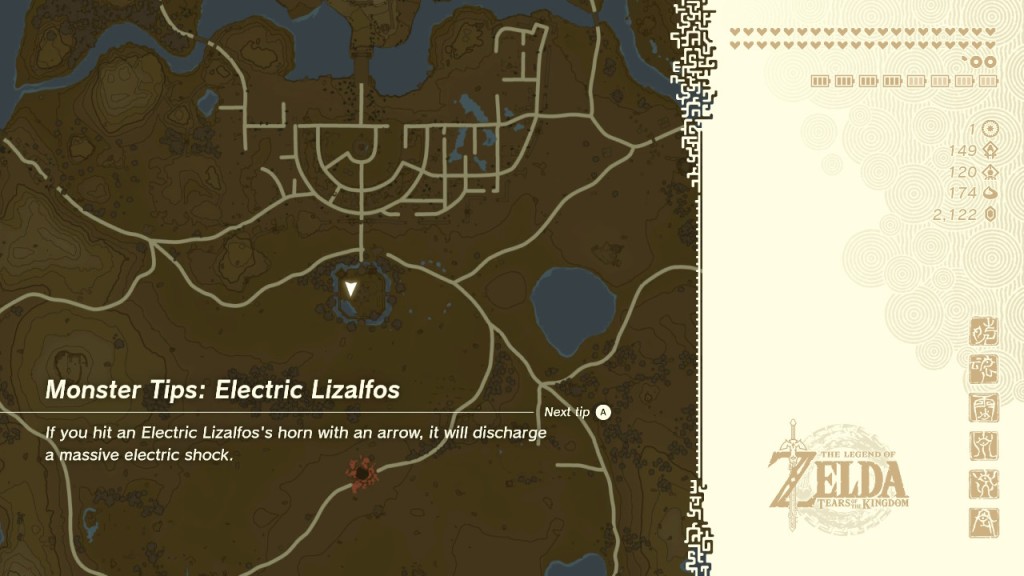

Another problem with the game is that there’s very little continuity between TotK and BotW. It’s odd that there’s barely any mention of the Sheikah Slate or Guardians. While some characters do recognize Link (and the game starts some time after the extended ending from BotW), it’s almost as if TotK is a reboot of sorts (or a standalone experience at the very least). I’ve been playing The Legend of Zelda since I was a kid and while it’s one of my favorite franchises, I don’t necessarily play it for the story/lore. With that said, TotK is perhaps the game I spent the most playing in 2023. I logged 130+ hours, found all but two Shrines on my own, uncovered all three maps, maxed out my heart containers and I still probably have 100+ hours of content left to consume. Going forward, I hope Nintendo creates two Zelda teams; one that will continue to push the open-world formula and another smaller team to create more “traditional” 2D/3D Zelda titles. I wouldn’t say “no” to another game in the same vein as BotW/TotK, but I think I’m ready for something completely brand new again.

HUMANITY, developed by Enhanced/tha Limited, is a puzzle game in the most traditional sense. While comparisons have been made to cult classics like I.Q.: Intelligent Qube on the original PlayStation (PS1), it feels like a lost Japan Studios game, something that would have sat alongside the likes of Tokyo Jungle back on the PS3. What’s really impressive about HUMANITY is how it feels like two different games by the end of its relatively lengthy campaign. In HUMANITY, you control a dog and your goal is to guide endless droves of humans to the light in grid-based stages. Over the course of the game, you’ll learn new abilities which allows you to manipulate the humans in specific ways. You’ll make them turn in different directions, jump from one square to the next, arm them with guns and even purposely lead them to their deaths. These abilities don’t necessarily carry over from one sequence to the next, although the game does naturally build on ideas presented in previous levels. The soundtrack is also exceptional and if you enjoy a particular track, you can play it during any stage of your liking.
HUMANITY has an incredible sense of visual progression. The game’s main hub is a gigantic white room with statuesque obelisks that take the player to a series of levels. As the dog, you can run around this space freely and even access the game’s options from here. When you finish one world, another figure will appear in the room. At the center of this hub, a large object will change its appearance as you progress. Ever since Star Fox 64, I’ve loved giant faces. The giant computer face boss from Contra: Shattered Soldier and Bayonetta’s main angel bosses further solidified my love for gigantic intimidating face bosses in videogames. I am happy to confirm that HUMANITY contains one too. The goal for each stage is to typically get humans to the goal line, but within each stage, there are secret characters called “Goldy”. When collected, they will appear in the white room showcasing your mastery of each level. Once you see start seeing a sea of gold in the hub area, it’s impossible to not want to complete the game at 100%, and I did.



There’s a level editor in HUMANITY, but I only checked out a level or two made by other players before I went back to the single-player. While I do enjoy the likes of Super Mario Maker, I don’t quite have the willingness or mentality to construct a brain-busting puzzle scenario in a game like HUMANITY. Finally, HUMANITY has a nice accessibility option where you can watch demonstrations and solutions to any of the puzzles in the game. While I am not against asking for help in a game or looking something up when I get stuck, I felt compelled to solve all of the puzzles without any assistance. Somehow, after banging my head against the wall on certain levels, I completed the game at 100% with the Platinum trophy earned without having to watch any of the solution videos. It’s easily one of my favorite experiences of the year.
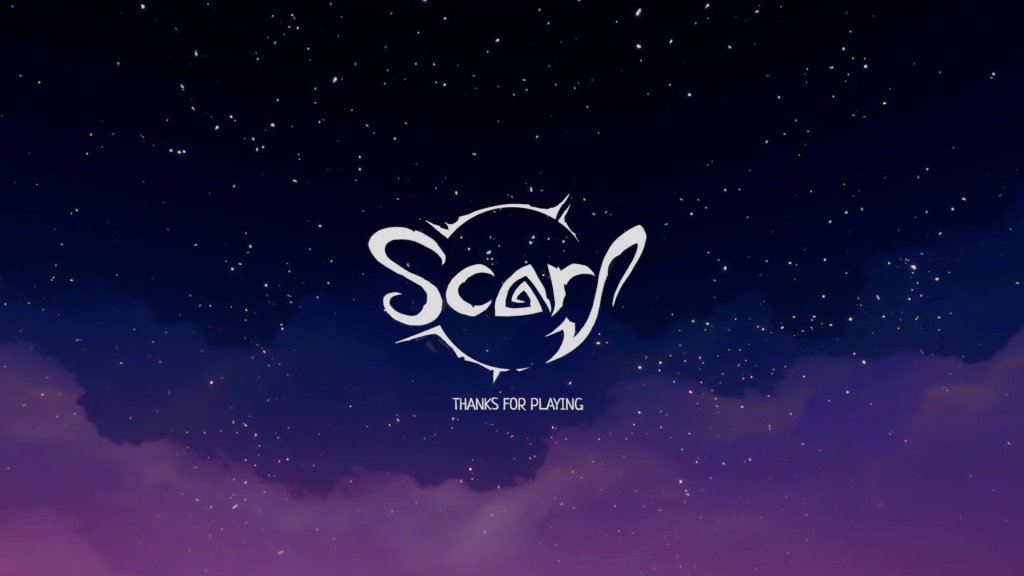
Scarf, developed by Uprising Studios, is a minimalistic 3D puzzle-platformer about a sentient scarf that may or may not be evil? It’s hard not to think about Journey when playing this game; the way the scarf animates and becomes embroidered with glyphs is evocative of Thatgamecompany’s cult classic experience. Structurally, it feels more like the recent indie 3D puzzle-platformer called OMNO. There’s no dialogue and most of the story is told through murals in the environment. The game starts in a hub of sorts that branches out into three different levels. The levels must be played in a specific order, however, so the hub is somewhat of an illusion of choice. In each world, you’ll learn new abilities for your scarf which allows the player to double jump and glide, for example. These powers are used almost immediately to solve simple environmental puzzles, some of which simply ask the player to step on switches or push/pull blocks. The levels are mostly linear with a few paths off the beaten road which usually lead to one of the collectables.

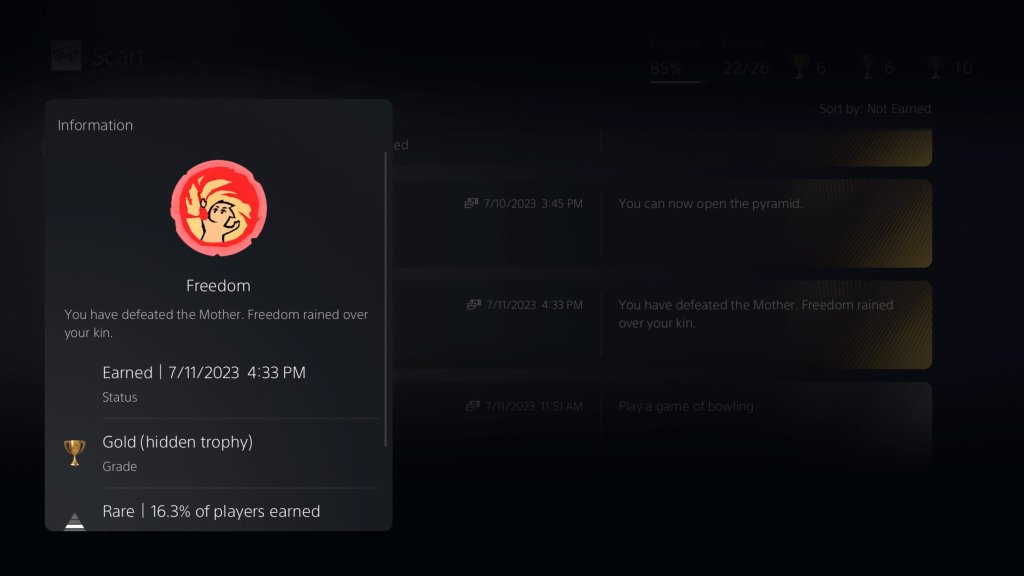

Speaking of the collectables, if you don’t find them all on your first playthrough of a level, you can replay them to pick-up anything you have missed. Unfortunately, learned scarf abilities in later levels aren’t retroactive, so you have to relearn the powers as you progress through the stage again. Furthermore, my playthrough was riddled with glitches/bugs. When I revisited certain levels, the game erased my earned collectibles which locked me out of getting one of the trophies. Also, there’s multiple endings, one of which requires you to not collect everything in the game. If you manage to find everything on your first playthrough (like I did), then you’ll have to start a brand new game to earn the other ending. The game doesn’t exactly respect your time, despite its relatively short runtime (I finished the game after 5 hours or so). Scarf is a relatively well-made 3D platformer, but it lacks an identity and needs a bit more polish.

Star Wars Jedi: Survivor, developed by Respawn, is the follow-up to Jedi: Fallen Order; a 3rd-person action-adventure game that takes place after the events of Star Wars: Episode III: Revenge of the Sith. If you’re familiar with the franchise, both games take place after Order 66 has been given; the elimination of all Jedi within the universe. Cal Kestis, one of the few remaining Jedi, continues to be on the run from the Empire. Survivor feels like the big budget sequel you’d expect it to be; there’s more set-pieces, more lightsaber stances, more skill trees, more collectables, more of everything. Just like the first game, you’ll hop planet to planet, but this time, your goal is to ultimately find a safe haven for lost Jedi. Each location is densely packed with secrets, shortcuts and encounters. The Souls-like elements make their return as well, although the sequel feels more forgiving considering the amount of combat options you have at your disposal. Less is more, and in Survivor’s case, sometimes there can be too much of a good thing.
My favorite thing about the game is the cantina you discover and develop over the course of your journey. By completing side quests and meeting people during your travels, more NPCs will gather at the cantina. I was so enamored with the cantina, I found myself wanting to return to the saloon to see what new conversations popped-up instead of progressing the story. It’s reminiscent of the crew you put together in Mass Effect 2 or the base of operations you build in Horizon: Forbidden West. These bar patrons also provide some of the more interesting world-building elements the game has to offer and some of them even offer you their services (such as a robot who trades “Perks” for particular collectables you find). The Perks are passive abilities that impact your playstyle during combat and some of them, like having the ability to block more attacks or gain health back when you defeat an enemy, are extremely useful. Another cool decision the designers made was to give Cal most (if not all) of his traversal abilities from the last game right at the beginning. By doing so, the two Jedi games feel like a more interconnected, continuous journey.


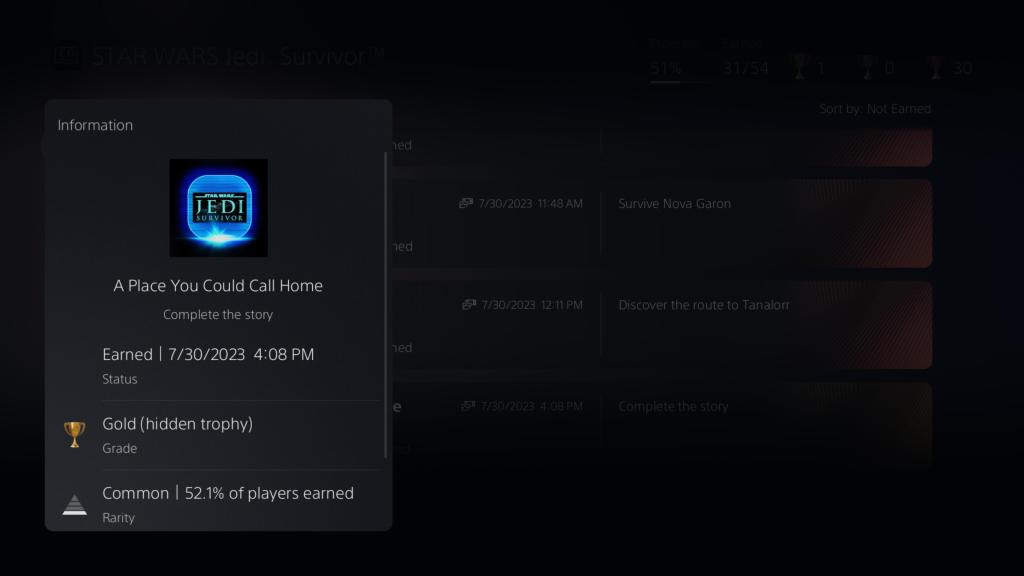
A big part of the game has you discovering Jedi Chambers, which are basically the optional Tombs from the more recent Tomb Raider trilogy by Crystal Dynamics. These chambers are self-contained puzzle rooms that make use of your force abilities and they’re some of the more interesting side excursions in the game. I completed the game on Jedi Grand Master difficulty at 71% completed, but there’s still a lot of side content to complete and collectables to find. I would be remiss if I didn’t mention how buggy the game was across all platforms since launch. As of the latest patch, the game apparently is in the best shape it’s ever been, but my initial playthrough wasn’t too riddled with glitches, outside of some performance issues. I’m not a huge Star Wars fan, but between Fallen Order and now Survivor, Respawn’s Star Wars games are probably my favorite thing about the franchise right now.

Gravity Circuit, developed by Domesticated Ant Games, wears its love for Mega Man X/Zero closely on its sleeve. There are many 2D retro-inspired indie games today, so it’s hard to stand out from the rest. This year alone we saw Vengeful Guardian: Moonrider and Bat Boy, for example, two games clearly paying homage to the games of yesterday. Between the three, although they are very different from each other, Gravity Circuit is the best one I’ve played all year. Gravity Circuit is a Mega Man game through and through. The game has 8 “robot masters” called Circuits, which have gone rogue. Similar to the robots found in most Mega Man games, each one serves some purpose on the planet although they weren’t really made to better the lives of others or perform some sort of societal duty. One Circuit, for example, is blasting musical beats throughout the city causing damage to the other robots. Another Circuit has claimed the highways and disrupted cargo routes for the protagonist’s allies. After the game’s introduction stage, you’re teleported to a base of sorts where NPCs have gathered. Here you can upgrade your character, talk to robots you’ve saved and select your next mission. The game has great spritework, a good soundtrack and decent parallax scrolling, too. The color usage is also very simple, most circuits are simply shades of one solid color, including your main character.



I completed the game on Normal difficulty with everything collected, outside of a handful of Data Chips (which are essentially gallery items for each character, enemy and boss in the game). Similar to the latter Mega Man X titles, there are robot civilians to save in each stage, which once rescued, grant the player with a special currency that can be used to purchase passive abilities. There are also special moves called Burst Techniques which can be purchased after you defeat a “robot master”. Your character, Kai, can swap these abilities/moves on the fly as well. On the default difficulty, I didn’t find myself using all of the abilities at my disposal, but perhaps they’re more useful on the harder difficulty. If you’re a seasoned enough player with these types of games, you can mostly get by on Kai’s default weapon, which are its fists. You also have a hookshot that can be used to grapple ceilings for traversal and you can even steal enemy shields to toss them back. Grabbing and tossing enemies is also a very powerful technique. When you kill an enemy, you can grab them for a short period of time, or you can perform what is called an “overkill”, which I believe produces more resources for the player. Gravity Circuit is a complete package filled with additional modes and harder difficulties, so there’s a lot here if you’re looking to scratch that Blue Bomber itch.

Koa and the Five Pirates of Mara, Koa and the Five Pirates of Mara, developed by Chibig, Talpa Games and Undercoders, is a simple 3D platformer that feels like it was made to be someone’s first game. You play as a Koa, an aspiring pirate whose goal is to complete trials created by legendary pirates who have more or less retired. The story/setup isn’t very interesting, but you’re not really here for the plot. A 3D platformer’s move-set is one of the most important aspects of the genre. Koa’s default running speed feels a bit slow, but after you perform a basic jump, you can roll when you land which provides some decent momentum. The game’s clearly made to be speed-ran, although I wish the levels were a bit more interesting in terms of their overall design. Almost every level throws the same types of platforming challenges/sequences at you; moving/sinking platforms, spikes, cannonballs, lasers or even the occasional switch.



Fortunately, levels do not overstay their welcome. The game also has time trials for each level. Most time trials ask the player to complete the level in less than two minutes, so even when you’re playing casually, you’re sort of in and out of a stage before it becomes too repetitive. While I do appreciate the fact that there are time trials with gold ranks to earn, the levels aren’t exactly difficult to run through and you can cut most corners with the roll maneuver. I think the most interesting thing about the game is the world map where you can sail around. It feels like an old-school RPG in a sense; there are hidden barrels to break, secret islands to discover and other goodies tucked away at each corner of the sea. At times, more than one stage is available to choose, so there’s a degree of non-linearity in the way that you progress. I completed the game at 100% with the Platinum trophy earned. Between the two games from Talpa Games, I think I prefer Mail Mole to Koa. I liked the game, but it felt more like comfort food gaming to me; just something where I could run around, jump and collect things and feel accomplished. I think there’s potential here for a more interesting platformer, so hopefully the developers get the opportunity to make another game.

Planet of Lana, developed by Wishfully Studios, is a 2D cinematic platformer in the same vein as Another World, Heart of Darkness and INSIDE otherwise known as the school of Éric Chahi. The game starts in a seaside village with townsfolk living their lives when suddenly, an alien invasion occurs and every villager gets kidnapped, including your childhood friend (or sibling?). If you’ve played a game from this subgenre before, there’s nothing really here you haven’t seen before. Like other games of this ilk, there’s a lot of trial & error. You’ll often arrive to a screen where an enemy is patrolling and it’ll take a death or two before you know what you’re supposed to do. During the early parts of the game, you’ll come across an alien-like pet who accompanies you on your journey to save your village. This animal friend can affect objects in the environment, such as creating extended platforms so you can jump larger gaps. There’s some interesting puzzles here and there but you’ll often be pushing boxes in order to reach elevated platforms.


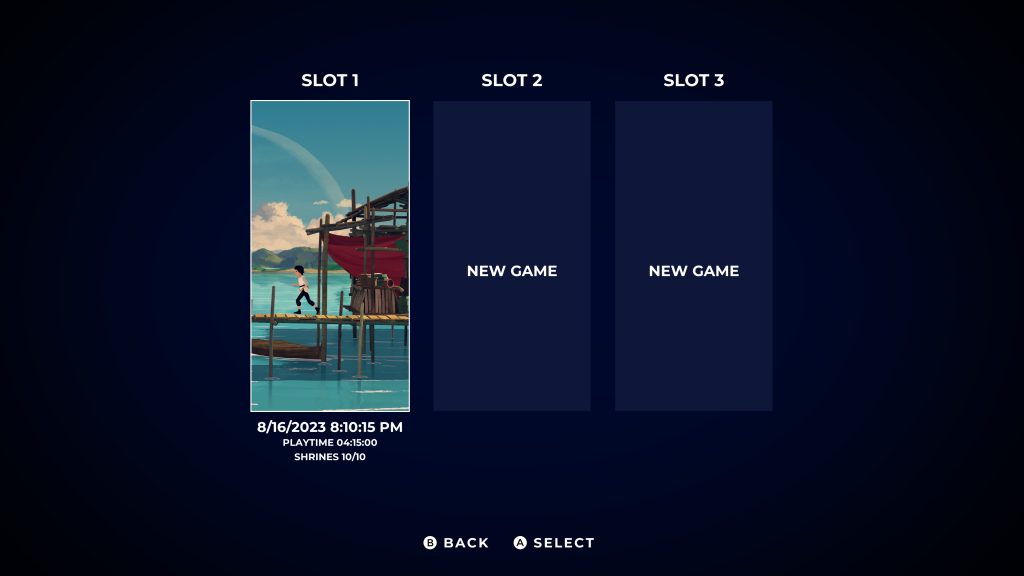
One of my favorite things about these games is when the camera pulls back to give the player a more cinematic view of the area/screen. This isn’t a technique exclusive to Planet of Lana, but when the camera zooms out, it creates for some beautiful vistas. I completed Planet of Lana with all of the Shrines discovered (which doesn’t do anything other than provide some additional lore?). Like other cinematic platformers of late, there’s an achievement for beating the game with zero deaths. Look, I like the game, but not enough to speed-run it and learn all of the corners you need to cut in order to beat the game with zero deaths. As someone who’s still a completionist at heart, I wish developers would stop incorporating achievements/trophies like this. Cinematic platformers aren’t exactly the type of games I enjoy doing no-death runs on, let alone speed-running. I’m here for the art, atmosphere and puzzles first and foremost and fortunately, Planet of Lana mostly delivers in that respect.

Ravenlok, developed by Cococucumber, is an action-RPG that feels like it’s ripped right out of the Xbox 360/PS3 era and that’s not necessarily a bad thing. You play as a young girl whose family has moved from the big city to ta rural farmland. While helping her parents unpack in their new home, she discovers a mirror that sends her to another world, Alice in Wonderland-style. The game uses colorful voxel graphics and has fixed camera angles. Ravenlok is a sort of no-nonsense experience. The quest structure is more or less a series of fetch quests; collect this item, kill that enemy, talk to this person, and it rarely deviates from this path. The game is divided up into three main areas and there’s a nice sense of visual progression in the main hub; a locked door with 3 slots that hold crests, which are the game’s main objective.

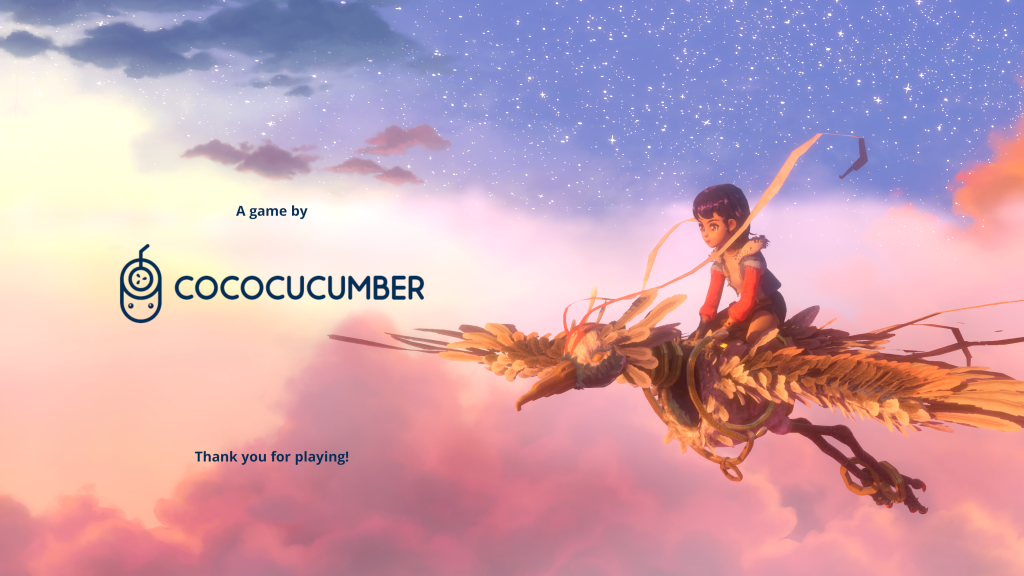

Each of the three main areas has a handful of screens that are densely packed with enemies, items and the occasional puzzle. If anything, the game moves extremely fast and you’re constantly moving from one screen to the next. Ravenlok feels like a mindless action game, almost like a button-smasher at times. You’ll gain up to four abilities, which are on cooldowns, but you can sort of brute force your way through the entire game if you’re upgrading your base equipment. There are many boss battles in the game, and although they have interesting designs, most will flail about or attack you with AOE-type moves that are easy to avoid. The entire game feels really antiquated, but in a comforting, nostalgic sort of way. I completed the game with everything done and collected; all side quests, max level and all achievements unlocked. I actually liked the game but it was the ultimate “in one ear, out the other” experience.
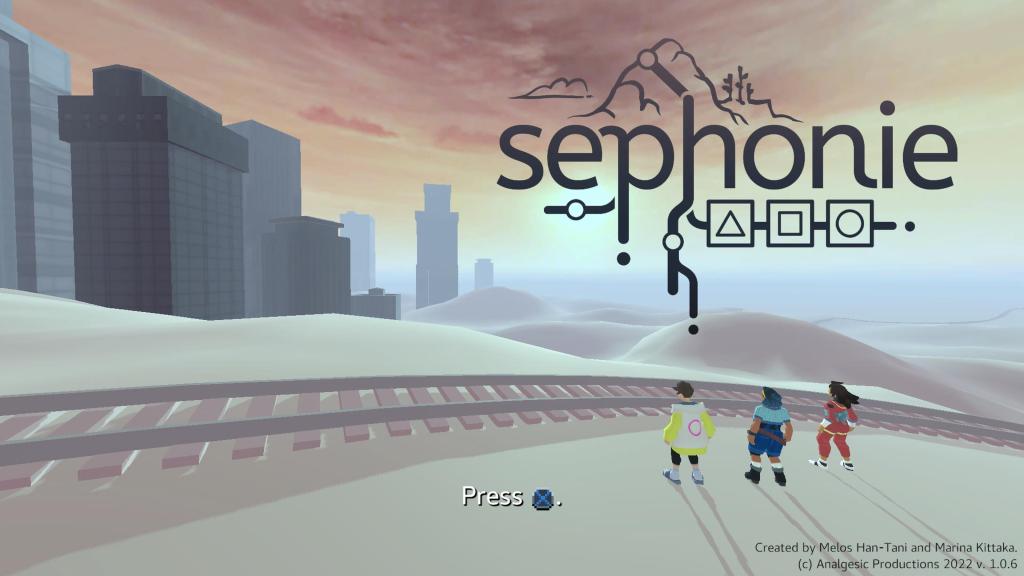
Sephonie, developed by Analgesic Productions, is a 3D platformer about three scientists of Taiwanese descent who set out to explore a sentient island. Sephonie is an odd game that’s certainly not for everyone. It’s an extremely strict, precision-based platformer with a somewhat unusual control scheme. Your character controls like a car, almost like an old-school PS1 era game that had tank-controls. While the game has relatively well-placed checkpoints, traversing some of the environments can feel extremely frustrating. With that said, you’ll learn new abilities over the course of the game that makes traversal more manageable (like the ability to dash and glide). The game, at times, also feels autobiographical and has decent LGBTQ+ representation. Similar to the developer’s previous games, Sephonie can become a bit too wordy, however. It’s not as word vomit-y as The Messenger (another game I finished this quarter that I wrote about below), but there’s a lot of text here, almost like it’s a visual novel with some platforming sequences.
The game’s core gimmick, so to speak, is a Tetris-like mini-game that’s not exactly fun. To learn more about the island and its inhabitants, the player must link with creatures scattered about the environment. This mini-game of sorts isn’t exactly challenging and it’s sort of confusing if you’re not using the in-game “help” function. You essentially need to fit similarly-colored shapes next to each other, I think? The best part of these sequences is the music. In fact, the soundtrack is quite exceptional, as per usual considering the composer’s previous work on both Anodyne games. Although there’s a narrative reason for the linking mechanics, I could have done without it (or perhaps the developers could have approached the idea differently) as it sometimes kills the pacing.

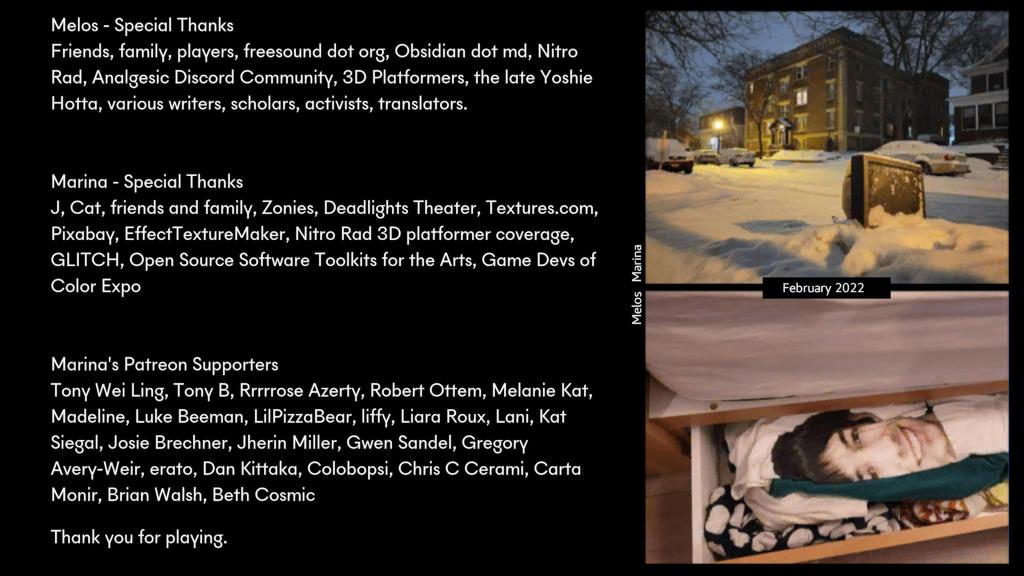

Sephonie has one of the best post-games I’ve ever seen. When you finish the game, not only can you revisit every area to collect any item capsules or linked creatures you may have missed, you unlock additional features which makes exploration more approachable. In the options menu, you can activate “Bubbles”, which act as both a collectable and an environmental object that makes navigating the world easier. Furthermore, the game will now keep track of how many item capsules, Bubbles and linked creatures that are left to discover in an area. Similar to their previous games, there’s a development room to find which houses even more goodies. I finished the game with the Platinum trophy earned, but there’s still a ton of things to collect and creatures to link with before I shelf it for good in my digital library.
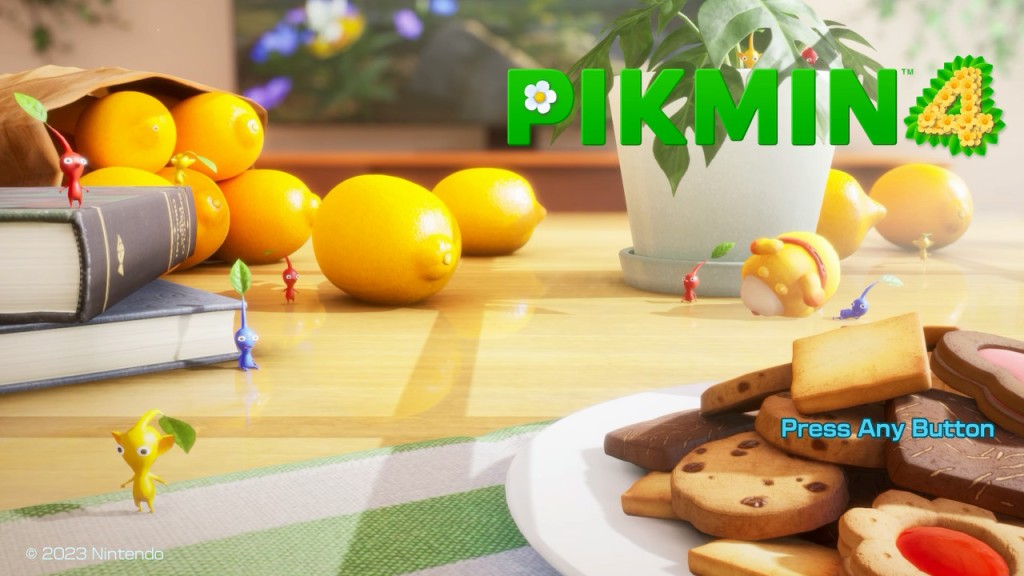
Pikmin 4, developed by Nintendo, is the fourth official installment in Miyamoto’s long-running garden simulator of sorts. Pikmin 4, like other entries in the series, takes place on some facsimile of Earth. Pikmin has always contained real-world items to collect like Duracell batteries, rubber duckies, and even various Nintendo systems, suggesting that the games take place in our universe. Pikmin 4 is the first entry in the series to suggest that there’s perhaps human-sized people who used to live on an earth-like planet, however. The majority of the game takes place around the backyard and surrounding areas of a modern-day house on a planet that’s arguably Earth. I’ve always likened Pikmin’s vibe and atmosphere to the likes of Nintendo’s very own Earthbound series. There’s a weird air to the games that feels almost alien-like despite taking place in a space that feels so similar to ours. Unfortunately, Pikmin 4 feels too terrestrial, like a greatest-hits of sorts instead of the next evolution in the series. With that said, the game’s still a lot of fun and there’s long overdue quality-of-life (QoL) improvements to boot.
Pikmin 4 emphasizes the technique known as “Dandori”, which basically means planning and organizing your tasks in the most efficient way possible. Strategy has always been a component of the Pikmin franchise, but this time they’ve sort of isolated the idea into its very own gameplay mode. Over the course of the game, you’re required to participate in these Dandori challenges, which are usually time trials where you compete with the NPC in small arena-based environments where the goal is to collect as many items as you can. Outside of the main game, it’s here where your multitasking comes more into play, as you’ll need to send Pikmin off into groups to either attack enemies, break down barriers or gather goodies in order to succeed. It’s fun and engaging the first few times, but similar to every other aspect of the game, there’s maybe just a bit too much of it.
Pikmin 4 is a dense, packed experience. Most levels take place on the earth’s surface. Just like previous games, the surface is littered with treasures to collect, monsters to defeat and shortcuts to create. Each area is self-contained still, but within each level there are pipes that take the player to either the aforementioned Dandori challenges or caverns, which makes their return from Pikmin 2. This time, they’re all handcrafted, however, and you can bring your own Pikmin types into them. The game autosaves on each floor of a cave and you can technically retreat at any time and tackle the rest of it at your leisure. Enemies only respawn when you fully clear and revisit said cave. The caverns house some of the more difficult enemies, many of which return from previous games. The addition of Oatchi is arguably the biggest differentiating factor here, but one could argue that the dog is more of a quality of life improvement instead of a series-defining feature. There are also no major bosses outside of the true final boss, which I found to be a disappointment coming from Pikmin 3, which had more traditional, set-piece style boss encounters.



Your dog, Oatchi, also creates for a more forgiving Pikmin experience. In this game, you can simply carry all of your Pikmin on the dog’s back, so you rarely have to worry about them getting stuck in the geometry or left behind. You can also rush enemies while they’re on your back, which instantly launches the Pikmin onto the enemy. Ice Pikmin combined with this “rush and attack” technique sort of trivializes the entire game, however. It’s arguably the easiest entry in the series, considering the fact that there’s no in-game countdown pressuring you to “finish” the game. There’s still a time limit during the day and similar to the older games, you must make it back to your ship/safe zone with all Pikmin gathered or they’ll be left behind as fodder for the creatures on the surface, but this time there’re gadgets/upgrades you can purchase which offsets the urgency. There’s a whistle, for example, that calls all stray Pikmin back to your ship immediately. Finally, there’s night missions, a series first, which act sort of like tower defense levels where monsters rush hive-like strongholds in waves that hold undying ghost-like Pikmin. I completed the game with the true ending and zero Pikmin deaths, but I still have many things to collect and more of the side content to do. I liked Pikmin 4 and while I normally wouldn’t say something like this, I feel like there’s just too much game here.

Blasphemous, developed by The Game Kitchen, is a dark and brutal 2D action-platformer drenched in religious themes and iconography. The game has beautiful background art and great sprite-work, many of which are large in scale. Your character is equipped with a sword, which can be upgraded, and over the course of the game you’ll earn new abilities and spells. Combat feels crunchy and satisfying and while the game can feel quite challenging at times, if you’re exploring thoroughly and finding all of the spells, accessories and upgrades, there’re many options at your disposal to gain the upper hand. One of my favorite things aesthetically about Blasphemous is the fact that rosary beads act as your accessory slots in a sense. Tying your game’s narrative into the UI interface is always appreciated. Blasphemous is most certainly Metroid-like, but its post-Dark Souls influences are quite apparent too. When you die, your maximum health bar decreases until you reclaim your “soul” in the spot where you perished. There’s also a healing room of sorts where you can spend the game’s currency to “resolve you of your sins”, so to speak, which has the same effect as reclaiming your soul.



Blasphemous is the type of game where you’re expected to read item descriptions to figure out its more esoteric secrets. It’s also the type of game that is riddled with hidden events/scenes that you may/may not stumble upon during your first playthrough. A lot of these scenarios are required to unlock the true ending, so unless you’re extremely perceptive, you’re likely never going to figure out the order of operations without a guide. My brother played through the game before me, so I got the opportunity to have a few “watercolor” moments with him where I could gather some hints before resorting to a guide. I completed the game at 100% with “Ending A” and everything collected from the base game. I dipped my toes into some of the now-integrated DLC areas (such as the Bloodstained crossover challenge rooms), but I did not do all of them. There’s apparently a true ending when you new game+ and follow cryptic Dark Souls-like event sequencing, but for now, I’m good. I’d much rather play the recently released sequel, Blasphemous 2, if I’m going to give this series a revisit anytime soon.
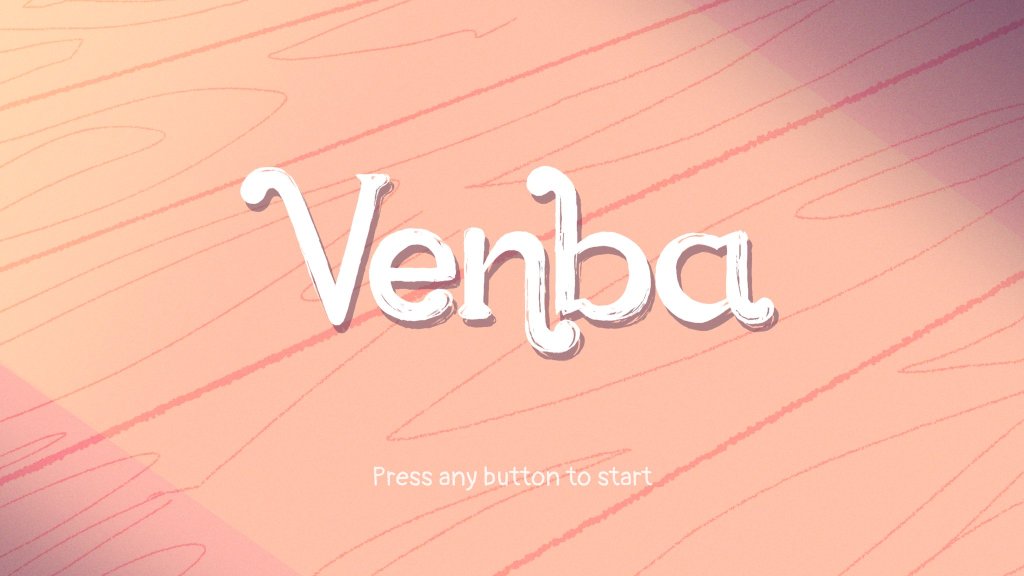
Venba, developed by Visai Games, is a short & sweet cooking game about an immigrant Indian family living in Canada while they wrestle with their culture in a place they do not call home. It’s very similar to Florence, a mobile point n click adventure game that came out a few years ago, at least in terms of pacing. Each chapter presents the player with a new dish to make that ties into the narrative. The actual cooking mechanics is more about following the order of operations than it being a mini-game or anything. You’re given all of the ingredients right out of the gate and it’s your job to figure out how to prepare the dish based on incomplete recipe books and the occasional introspection.



I found the recipes somewhat frustrating to construct, even with the flavor text options. I never used any of the “hints”, so most of the time, figuring out the order of operations for each recipe was a lesson in trial & error. The writing is great and the text boxes and font size are big. I enjoyed the story, art and music more than actually playing the game itself. I found the recipes to be finicky at times, in terms of what steps to take before the next, which usually resulted in trial & error more often than not. There’s really no room for experimentation, but I’m guessing the point of the game was to showcase Indian cuisine properly, so there’s really only one correct way to make the meals. Venba only takes a few hours to beat, which makes it a perfect one-sitting game; something you could finish during one evening of play. I completed the game with all of the achievements unlocked.

GYLT, developed by Tequila Works and Parallel Circles, feels like a lost Xbox 360/PS3 era game. Originally exclusive to Google Stadia, Tequila Work’s survival horror has finally found its way to other platforms. You play as a little girl whose cousin has gone missing in a cursed mining town in Maine. You’ll make your way through an abandoned town comprised of interconnected locations like a school, an arcade theatre, and mines. GYLT is designed like an older Resident Evil/Silent Hill game. There’s a traditional map with locked doors and gated areas which require key items in order to progress. Your health is restored by collecting inhalers and the few monsters that roam the town must be destroyed by your flashlight, which requires batteries, both of which are limited resources. Although it’s serviceable, the combat is probably my least favorite part of the game. There’s also light Metroid elements where you need to backtrack to previous areas with upgrades, like gaining the ability to put out fires.



GYLT is a really tight and cohesive survival horror-light experience. It’s also feels reminiscent of old PC-style games with its emphasis on environmental storytelling; there’s a lot of legible writing and graffiti on the walls. I completed the game with everything collected and all of the endings seen. One of the endings was surprisingly dark and a little upsetting, despite the game’s somewhat kid-friendly Halloween vibes. There’s a few situational trophies you can miss too, so you’ll have to replay the game from the start again if you wanted to earn them. For now, I’m carrying enough guilt from not playing other games at the moment, so a second trip to Maine will have to wait.
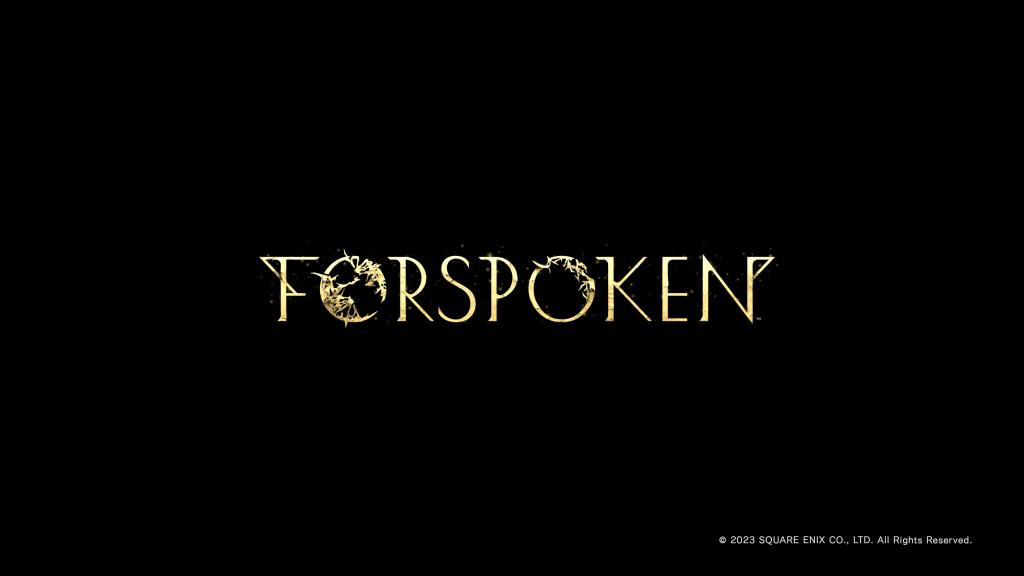
Forspoken, developed by Square Enix and the now-folded Luminous Productions, is an open-world action-RPG from the same developers who worked on Final Fantasy XV. The game’s about a “troubled” girl from a not-so-familiar NYC who gets transported to another world. The world she gets isekaied to is in peril, but all she really wants to do is to get back home to her cat (which is something I can totally relate to). Forspoken is arguably a modern-day Secret of Evermore, which was a Square Soft game from the 90s that was also about a boy and his dog who get whisked away to a strange world. One of Forspoken’s biggest selling points is the traversal and fortunately, the overall character movement feels great. Dashing across open fields, zipping up mountainsides and parkouring over rooftops almost feels as satisfying as swinging around NYC as Spider-Man from the more recent Insomniac entries. I just wish your traversal abilities were used for more environmental progression. The game sort of teases Metroid-like ideas with the Zip ability you gain which allows you to propel yourself up unclimbable mountains, but they don’t follow through with this concept for the rest of the game. The Glide ability, for example, allows you to surf across the water surface, but you’re really not required to use that ability in order to progress.
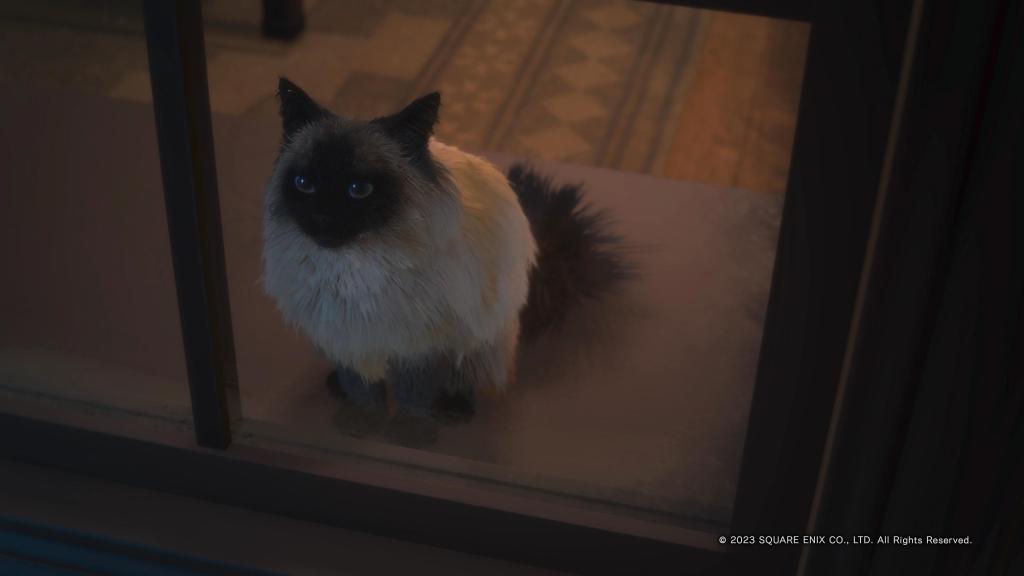


Forspoken really grew on me by the end of my 30+ hour playthrough. I played the game on Hard difficulty and it was relatively challenging at times. Most of the combat takes place out in the open-world and at times, the game can feel like a Musou title (Dynasty Warriors for the uninformed). It’s super satisfying to use one of your big area of effect (AoE) spells to completely decimate a large crowd of enemies. Once you learn more spells, the game becomes more enjoyable to play, especially once you realize that you can quickly cycle through your abilities on the fly (which isn’t totally clear to the player right out of the gate). You can stack spells that cause buffs and debuffs on yourself and enemies, respectively, and the cloaks and finger nail polish you equip can impact your stats and abilities as well. Ironically, Forspoken feels more like an RPG than Final Fantasy XVI, at least in a traditional sense. Unfortunately, most of the enemies aren’t very interesting to fight, although some monsters are weaker to certain spell types, so the player is asked to approach each encounter carefully at the very least.



The In Tanta We Trust DLC is a really nice 3-4 hour distillation of the base game experience. It’s super focused, snappy and provides a lot of additional lore and context to the main story. It’s a prequel story of sorts where you inhabit the role of a character you only hear about from the original game. You have to relearn a handful of your abilities too, but this time, you’re accompanied with an ally who can perform team attacks with you, which adds a much-needed wrinkle to the combat. The challenges to upgrade your spells are also less demanding (and more fun) to complete in the DLC than they were in the base game. In Tanta We Trust takes place after the ending of the base game, but it’s a prequel of sorts in the timeline. It also ends on an interesting cliffhanger, one of which may never be fulfilled considering the production studio (Luminous Productions) has since folded back into Square Enix proper. I completed the DLC at 100% but I still have a lot more to do in the base game.

The Messenger, developed by Sabotage Studio, is a 2D action-platformer that looks and feels like an old-school Ninja Gaiden game. The first half of the game looks and sounds like an 8-bit 2D action-platformer, and it’s structured like one too. You play through a series of stages with point-A-to-point-B progression, each level typically culminating in a boss battle. About halfway through the game, you’ll arrive at a plot-twist where the game becomes 16-bit and the world you’ve been exploring is suddenly interconnected in a Metroid-like fashion, complete with a map and inventory. It was a neat twist for those who discovered it blind, but it was something that was unfortunately spoiled for me years ago. What’s disappointing about the whole thing is that the game doesn’t really play any differently. You still control and move your character as if you were playing an 8-bit 2D action-platformer. It’s not similar to the transition from Mega Man to Mega Man X, where dashing and wall-jumps differentiated the two series. In the Messenger, it’s purely aesthetics (unless you consider the Metroid-like interconnected nature of the game in the second-half to be what makes it 16-bit).



Some of the most challenging content in the game is to collect all of the green coins/medallions. There are mini challenge rooms that can be found off the beaten path which contain some of the more difficult platforming sequences the game has to offer. Conquering all of these rooms and scouring the map for all of it secrets was the most fun I had with the game. With that said, I really don’t like the writing in the game (which is a similar sentiment I share for Sea of Stars at the moment). It’s too self-indulgent, wordy and breaks the fourth wall far too often to the point where it’s not funny. It feels like it was written by someone in high school. At certain moments in the game, you can talk to the shopkeeper to hear stories. I often found myself glazing over the dialogue because it often reads like word vomit. I completed the vanilla game and the Picnic Panic DLC with everything collected. The DLC, which takes place on a secondary island, feels like it could have been from the base game. There’s a new idea or two here, including a surf board segment that goes on for far too long, but there’s nothing here that feels exceptionally inventive. The only trophies I’m missing are time-sensitive ones which I can earn on a new game+ playthrough. But for now, I’d rather go play one of the two dozen or so 2023 games I’ve yet to finish before even thinking about returning for seconds here.

The Legend of Zelda: Skyward Sword HD, developed by Nintendo, is quite possibly one of the most divisive entries in the franchise. Prior to the release of Tears of the Kingdom, I wrote a piece on Skyward Sword here. Skyward Sword isn’t my favorite Zelda game, but after replaying BotW this year and putting 130+ hours into Tears of the Kingdom, I found coming back to an “old” Zelda game to be quite refreshing, even if it still feels like a waggle-fest when you’re using the motion controls.



I completed Skyward Sword again with everything collected and completed; all heart containers earned, at least one of each item, insect and treasure collected, all side quests finished, and all equipment fully upgraded. I even made sure to record a time for each encounter/scenario found in the boss rush mode. Back when the original Wii game released, I played through Skyward Sword twice; once on the default difficulty and another on the unlocked Hero Mode, which is a more challenging playthrough. As much as I like Skyward Sword, I am not willing to do a second playthrough today, especially during a year like 2023. I really enjoy post-BotW Zelda, but I hope we can get back to a point where Nintendo can still provide us with a more “traditional” Zelda experience along with their ongoing open-world endeavors.

See you next quarter…
-Matty
2 Comments »